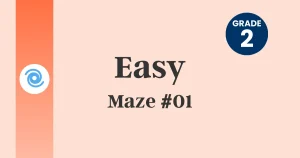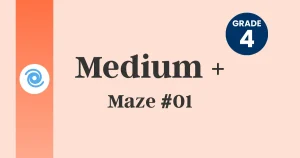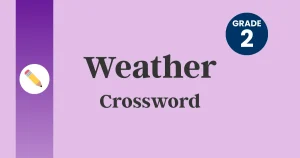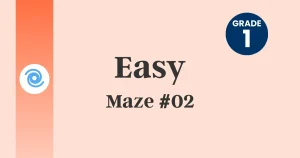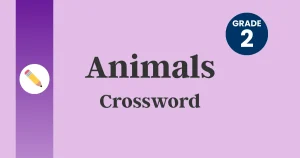🌀 Overview
This second Grade 2 Easy Maze builds on the first by introducing longer detours and trickier intersections. Students must pause and decide carefully before moving forward, making the puzzle an excellent tool for sharpening patience and planning skills. The maze remains friendly for young learners, but it encourages more attention to detail and perseverance.
🎮 How to Play
- Locate the Start box at the top corner of the maze.
- Trace along the open passages with a pencil, pen, or finger.
- Be alert for dead ends—if you hit one, backtrack and choose another path.
- Stay focused on moving steadily toward the Goal square.
- Once finished, replay the maze to see if you can find a faster or smoother route.
🎯 Learning Goals / Skills
- Practice strategic decision-making by evaluating multiple routes.
- Strengthen visual scanning and spatial awareness while navigating tight paths.
- Build perseverance by learning to accept mistakes and try again.
- Support fine motor control through careful tracing and neat path-following.
- Encourage a growth mindset, as repeated attempts often lead to improvement.
📖 Why It’s Right for Grade 2
At this stage, children are capable of handling puzzles that demand slightly more complexity than basic mazes. The layout introduces multiple branches and misleading turns, requiring learners to think several steps ahead. These cognitive challenges are well-suited for second graders, who are beginning to develop stronger executive function skills like planning, sequencing, and sustained attention. Completing this maze gives students both a sense of achievement and a chance to apply problem-solving strategies that will benefit them in math, reading comprehension, and even collaborative projects.
👩🏫 Teacher & Parent Tips
- Warm-Up Activity: Use the maze at the beginning of class to activate students’ concentration.
- Time Trial Challenge: Have learners race against the clock, tracking their progress over multiple attempts.
- Partner Work: Pair students so one gives verbal directions while the other traces, strengthening communication skills.
- Creative Extension: Invite children to design a new maze on graph paper, then swap with a partner to solve.
- Differentiation: Offer extra support by guiding struggling learners through the first few turns, then letting them continue independently.
🖨 Printable & Answer Key Notes
The blank maze is ideal for class worksheets, homework packets, or fun at home. The solution version provides a ready-made answer key, allowing teachers to demonstrate possible strategies and parents to check progress quickly. The puzzle’s balance of challenge and clarity ensures that learners stay engaged without feeling overwhelmed, making it a versatile resource for both school and home learning.
